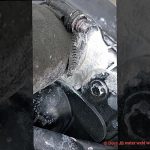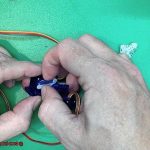Stickers are like the fashion accessories of our belongings, adding personality and flair to everything from laptops to water bottles. But have you ever wondered why some stickers stick like superglue while others seem to lose their grip? Could heat be the secret ingredient for sticker success?
In this blog post, we’re diving deep into the world of sticker adhesion to uncover the truth about whether heat really makes stickers stick better. We’ll explore the science behind this sticky relationship, discover why temperature matters, and even consider how professionals use this knowledge in their industries.
Before we get started, it’s important to remember that sticker stickiness depends on both the adhesive itself and the surface it’s stuck on. But don’t worry, we’re about to reveal how heat can give your stickers an extra boost. Let’s jump right in.
The Sizzling Connection between Temperature and Stickiness:
Contents
- 1 What is Heat?
- 2 How Does Heat Impact Sticker Adhesion?
- 3 What Tools Can Be Used to Apply Heat to Stickers?
- 4 What Types of Adhesives Respond Positively to Heat?
- 5 What Types of Surfaces Are Affected by the Application of Heat?
- 6 Testing the Effect of Heat on a Small Area Before Applying It Fully
- 7 Pros and Cons of Using Heat to Improve Sticker Adhesion
- 8 Conclusion
To understand how heat affects sticker adhesion, let’s take a closer look at what happens behind the scenes. Adhesives are made up of different chemicals that work together to create a strong bond between the sticker and its surface.
Temperature directly impacts these chemical compounds by ramping up their molecular activity. When things heat up, adhesive molecules gain energy and become more mobile. This means they can dive into any nooks and crannies on the surface, forming a tighter bond with your sticker.
But hold on. There’s a fine line between too hot and just right. Extreme temperatures can actually cause adhesives to break down, leading to weaker sticking power. So remember, moderation is key when using heat for optimal stickiness.
Professional Perks:
The connection between heat and sticker stickiness isn’t just fascinating; it also has real-world applications across various industries. For instance, in printing, professionals can harness heat to improve label adhesion on packaging materials. This means fewer lost labels during shipping and storage, keeping products looking their best.
In the automotive world, heat becomes a hot topic when it comes to stickers on vehicles. People often wonder if applying stickers in warmer weather will make them stick better. By studying the effects of temperature on adhesion, professionals can ensure that stickers stay put even in scorching conditions.
Understanding how heat affects sticker stickiness also helps with placement and removal strategies. Heating up adhesive can soften it, making sticker removal a breeze without any sticky residue left behind. This knowledge is particularly handy for retail and marketing folks who
What is Heat?
It’s like a game of tag between tiny particles inside an object. When those particles start sprinting, the object heats up. But when they slow down, things cool off.
Now, let’s talk about how heat moves around. There are three main ways: conduction, convection, and radiation.
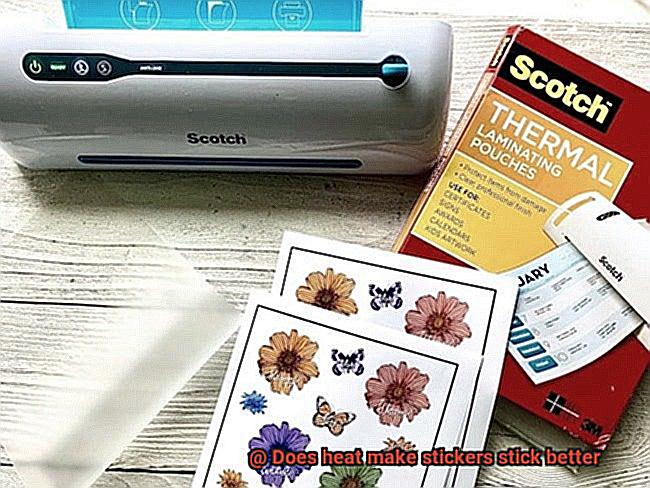
Conduction is like a secret handshake between particles. It happens when they touch each other and share their heat. Picture touching something hot – that’s conduction at work. It’s also why sticking a label on a heated surface can make the adhesive stickier.
Convection is like a dance party for fluids and gases. When they get heated up, their particles start grooving and moving faster. This causes the hot parts to rise and the cool parts to sink. But when it comes to stickers, convection isn’t really the star of the show since it mostly happens in liquids and gases.
Radiation is like heat traveling through space like a superstar on tour. It doesn’t need direct contact – it spreads through electromagnetic waves. The sun does it too. When it shines on something, like a sticker or a heated surface, it beams its heat energy over and gets absorbed.
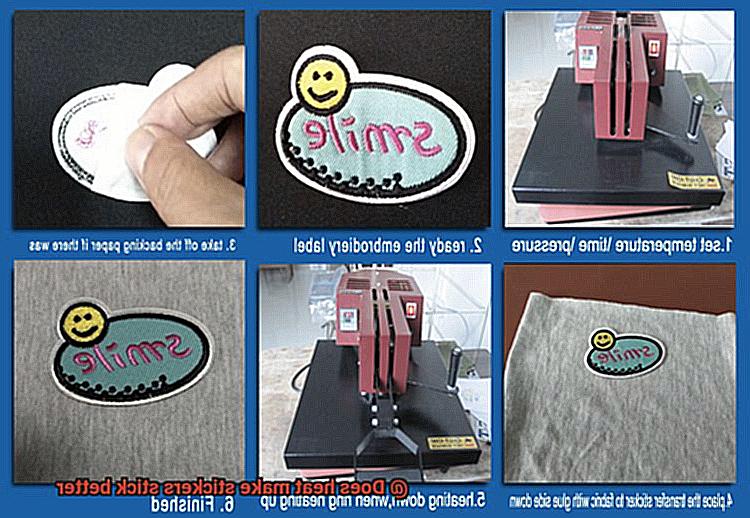
So how does heat impact stickers? Well, when you apply heat to a sticker, it acts like a personal trainer for the adhesive. It softens things up and makes them more flexible. This way, the sticker can stick better to surfaces. It’s like giving the adhesive a boost of power.
But hold your horses. Not all stickers handle heat well. Some adhesives can’t take the heat and become as gooey as melted cheese on pizza. That makes for messy applications and weak bonds. So before you go heating things up, make sure to check what kind of adhesive your sticker has.
And don’t forget about the surface. Heat might work like magic on glass or metal surfaces – they conduct heat well and help the adhesive activate. But if you’re dealing with fabrics or wood, heat might not be as effective. Those porous surfaces can make it hard for the adhesive to penetrate and create a strong bond.
To be safe, always test a small area before going all-in. This way, you can see if heat helps or hinders your sticker’s adhesion. Better to be cautious than to ruin your sticker or surface with too much heat.
How Does Heat Impact Sticker Adhesion?
Stickers have become a popular means of personalizing items, from laptops and water bottles to car bumpers and phone cases. But have you ever wondered how heat affects the adhesion of these sticky wonders? In this article, we will dive into the fascinating world of glue and explore how heat can impact sticker adhesion. So, buckle up and get ready to unleash the power of glue.
Softening and Melting:
When stickers are exposed to heat, something magical happens. The adhesive that holds them together undergoes a transformative process. Imagine the adhesive softening like warm chocolate on a sunny day or melting like butter on a hot pan. This change in texture allows the adhesive to penetrate deeper into the surface material, creating an unbreakable bond between the sticker and its chosen item.
Factors Affecting Sticker Adhesion:
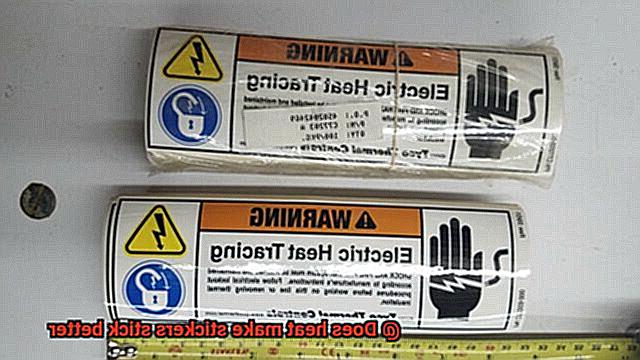
The impact of heat on sticker adhesion depends on several factors, each playing a vital role in determining the outcome:
- Type of adhesive: Just like people, adhesives come in different forms and have unique characteristics. Some adhesives have higher melting points, making them more resistant to heat, while others are more sensitive and prone to softening or melting.
- Temperature and duration: The dance between heat and adhesion is influenced by temperature and time. Higher temperatures and longer exposure intensify the impact on sticker adhesion.
- Surface material: The surface material is like a partner in this adhesive experience. It can either embrace the heat or reject it. Materials like plastic and metal expand when heated, creating a tighter grip on stickers. However, delicate materials like paper or fabric may cringe under excessive heat, risking damage or discoloration.
Finding the Right Balance:
In the world of sticker adhesion, balance is key. While heat can enhance sticker adhesion, it’s crucial not to overdo it. Too much heat can degrade the adhesive or cause it to lose its stickiness altogether. To ensure optimal results:
- Follow manufacturer’s instructions: Stick to recommended temperature limits for sticker application. Heed the advice of those who have mastered the art of adhesion.
- Controlled heat application: Embrace technology and use moderate amounts of heat, like a low-temperature hairdryer or a heat gun with adjustable settings. This allows you to navigate the fine line between stickiness and disaster.
Heat has a significant impact on sticker adhesion. When applied correctly, heat can soften adhesives, creating a stronger bond between stickers and surfaces. However, caution must be exercised to prevent damage or loss of stickiness.
So, the next time you’re applying a sticker, remember to harness the power of heat wisely for the best results. Stick with us for more fascinating insights into the world of glue.
What Tools Can Be Used to Apply Heat to Stickers?
Stickers are a fun and popular way to personalize our belongings, but nothing is more frustrating than stickers that won’t stick. Fortunately, there are various tools available to apply heat, enhancing the adhesive properties of stickers and ensuring they stay put. In this article, we will explore the world of heat tools and their role in achieving sticker perfection.
Hot Air Guns – The Wizard’s Wand:
Hot air guns are handheld devices that blow streams of hot air onto stickers, turning them into sticky wonders. With hot air guns, applying heat becomes a magical experience. Simply aim the hot air at the sticker, and witness its transformation as it becomes soft and flexible, ready to adhere to any surface. These guns are particularly effective for stubborn or large stickers that require an extra dose of heat magic.
Hairdryers – Everyday Heroes:
When you don’t have a hot air gun handy, fear not. Your trusty hairdryer can save the day. While hairdryers may not reach the same high temperatures as hot air guns, they still blow hot air onto stickers, improving adhesive properties significantly. They are versatile tools that can give your stickers extra sticking power, making them perfect for everyday use.
Irons – Smooth Operators:
Whoever thought an iron could be a sticker superhero? Set your iron to a low or medium heat setting and gently glide it over your sticker. The heat from the iron will melt the adhesive just enough to make it stickier than ever before. Irons work wonders with smaller stickers or hard-to-reach areas where precision is key. However, be cautious not to burn yourself or your sticker during the process.
Heat Press Machines – The Professional’s Choice:
For those who take sticker application seriously, heat press machines are the ultimate tool. These machines offer precise control over temperature and pressure, ensuring even heat distribution across the entire sticker. Heat press machines are commonly used in printing and can provide a professional touch to your sticker application process.
Specialized Sticker Applicators – The All-in-One Solution:
If you prefer a tool specifically designed for sticker application, specialized sticker applicators are the way to go. These handy gadgets often come with adjustable temperature settings to accommodate various adhesive types. Some even feature timers and pressure controls, allowing for the ultimate sticker-sticking experience. With specialized sticker applicators, applying heat becomes an effortless task.
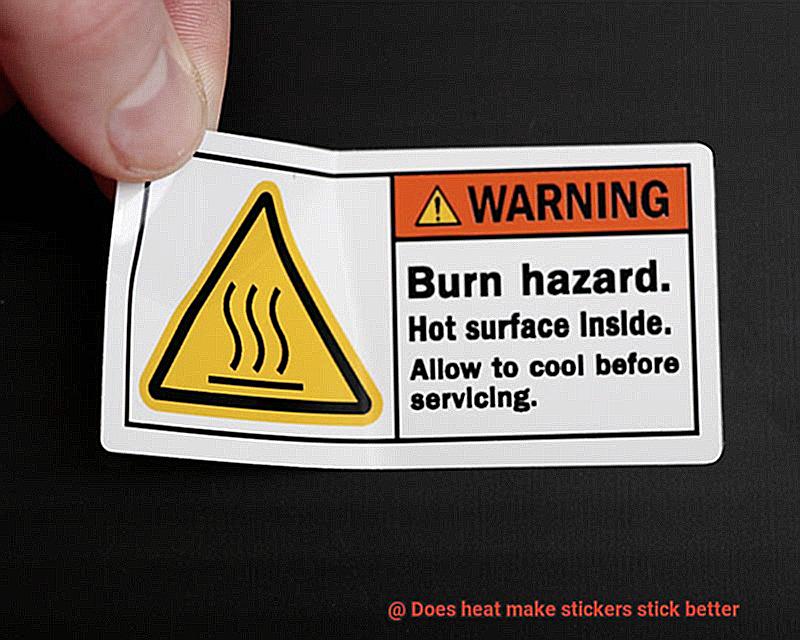
What Types of Adhesives Respond Positively to Heat?
Some adhesives possess a hidden superpower – they thrive under heat, creating bonds that are stronger than ever. In this blog post, we will plunge into the realm of heat-responsive adhesives and explore the various types that excel in high-temperature environments. Get ready for a captivating journey through the science of stickiness.
Thermoplastic Adhesives:
Prepare to be amazed by the incredible versatility of thermoplastic adhesives. These adhesive superheroes possess the power to become soft and pliable when exposed to heat. This unique ability allows them to easily adhere to different surfaces, creating strong bonds that can withstand even the hottest conditions. The impressive part?
Thermoplastic adhesives can be reheated and reactivated multiple times without losing their stickiness. Whether you’re repairing a broken toy or crafting a masterpiece, thermoplastic adhesives are your ultimate allies.
Hot Melt Adhesives:
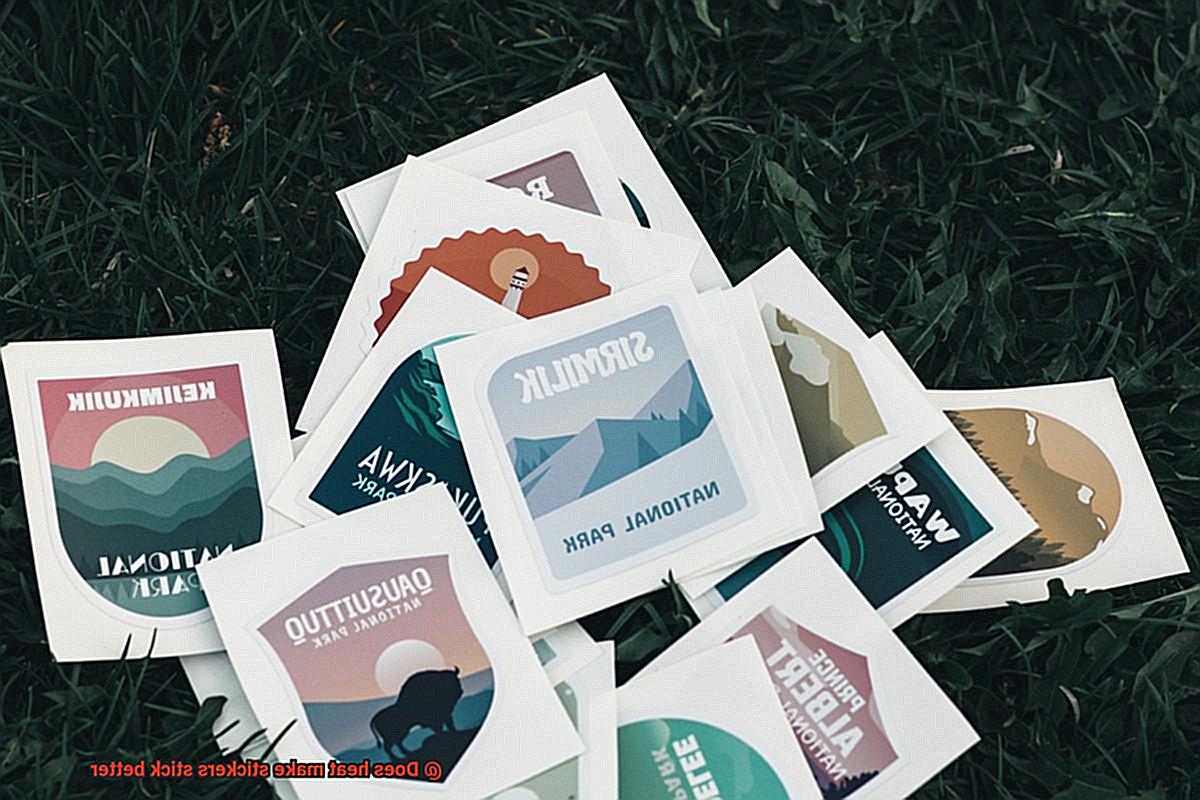
Imagine witnessing an adhesive metamorphosis – that’s precisely what happens with hot melt adhesives. When heated, these adhesives undergo a magical transformation, turning into molten wonders.
Ideal for industries requiring rapid bonding, hot melt adhesives liquefy and flow into surfaces with ease. Once cooled, they solidify into a robust and unbreakable bond, ensuring your creations stay firmly intact.
Heat-Activated Adhesives:
Embark on a covert mission with heat-activated adhesives, the secret agents of bonding. These adhesives possess a hidden power that activates only when exposed to specific temperature thresholds.
Once heated to perfection, they unleash their full potential, forming strong and durable bonds that withstand both heat and moisture. With their resistance to extreme conditions, heat-activated adhesives are the go-to choice for outdoor projects and areas with high humidity.
Epoxy-Based Adhesives:
Step into the realm of strength and endurance with epoxy-based adhesives, the tough cookies that adore the heat. These exceptional adhesives consist of two components that blend together to create a formidable bond. When heated, they undergo a chemical reaction, transforming into a rock-solid adhesive powerhouse. The result? A bond that can withstand the most demanding environments, making epoxy-based adhesives indispensable in industries like aerospace and automotive.
Not All Adhesives Love the Heat:
In our adhesive universe, not every adhesive is fond of high temperatures. For instance, pressure-sensitive adhesives (PSAs) rely on pressure for bonding and may struggle under hot conditions.
Similarly, solvent-based adhesives can lose their stickiness when exposed to prolonged heat. Therefore, it’s crucial to select the right adhesive based on its specific heat resistance properties, ensuring success in any project.
What Types of Surfaces Are Affected by the Application of Heat?
The secret might just lie in the power of heat. In this blog post, we will explore how the application of heat can work its magic on different surfaces, enhancing sticker adhesion. Get ready to discover the captivating world of heat.
Smooth Surfaces: Unlocking the Potential
Smooth surfaces, like glass, metal, and plastic, are a dream come true for stickers. When heat is applied to these surfaces, they undergo a subtle expansion, creating microscopic crevices that invite the adhesive to seep in.
This results in an intensified bond that makes the sticker stick better than ever. But that’s not all – heat also has the power to soften the adhesive itself, transforming it into a flexible marvel that can embrace every curve and contour of the surface.
Porous Surfaces: A Tricky Affair
Unlike their smooth counterparts, porous surfaces such as wood, fabric, and paper don’t dance to the same tune when it comes to heat. These materials have intricate textures and tiny openings that can absorb heat rather than allowing it to work its magic on the adhesive.
While heat alone may not significantly improve sticker adhesion on porous surfaces, fear not. There are specially designed adhesives that can provide effective bonding even without the enchantment of heat.
Type of Adhesive: The Chosen One
Not all adhesives are created equal when it comes to heat activation. Some adhesives, like hot-melt or thermoplastic adhesives, possess a fascinating secret – they are solid at room temperature but morph into a liquid state when heated.
This remarkable transformation allows them to flow and bond with the surface in a way that no other adhesive can.
So, if you’re using stickers with these types of adhesives, applying heat will indeed make them stick better, unveiling their true potential.
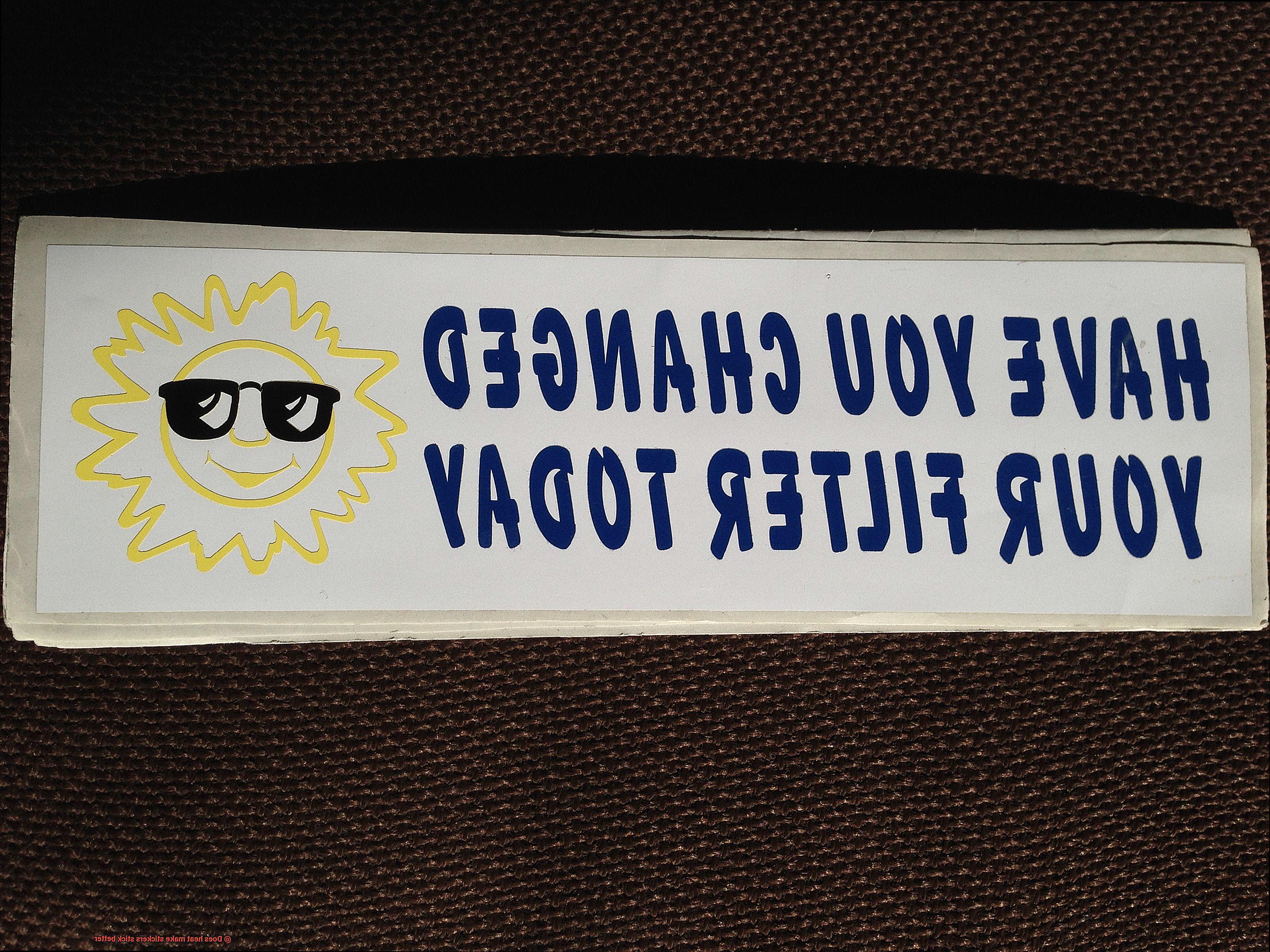
Delicate Surfaces: Handle with Care
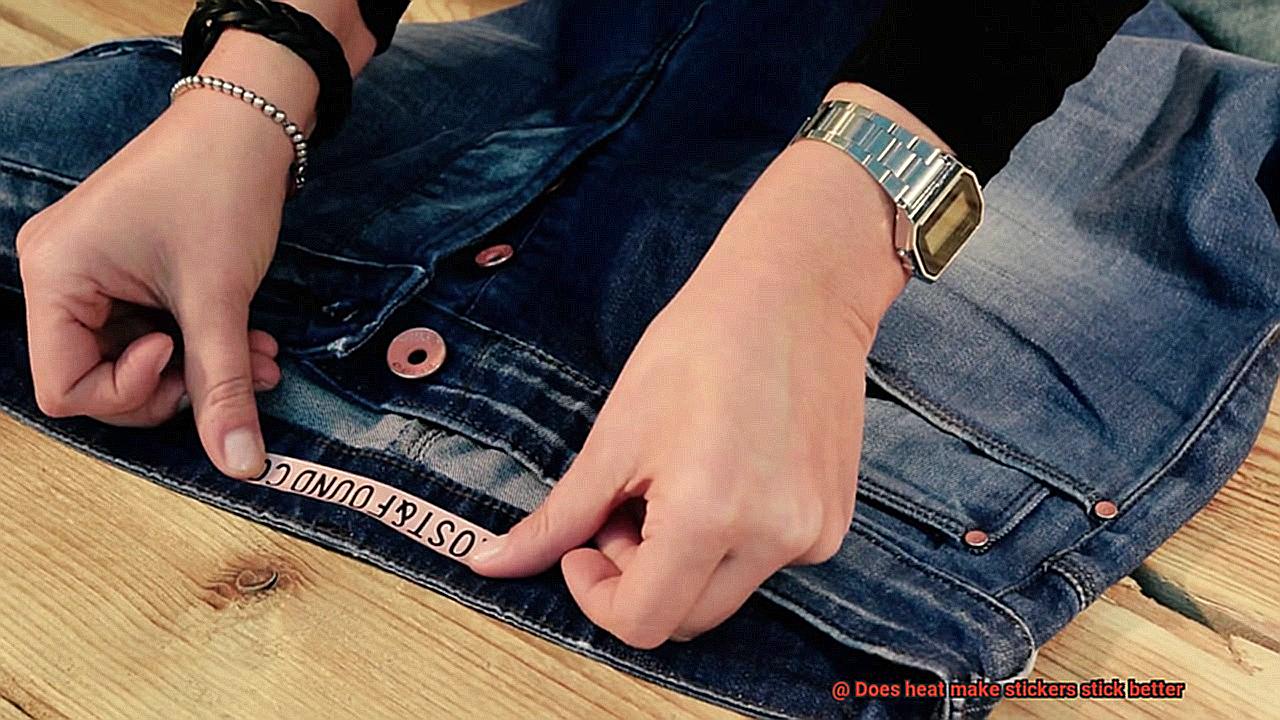
Caution is the name of the game when it comes to delicate surfaces like painted walls or sensitive papers. Excessive heat can unleash havoc, causing paint to peel or papers to warp – a nightmare for any sticker enthusiast. To avoid catastrophe, it’s always wise to test a small area first before exposing your precious surfaces to the warmth of heat. This simple precaution ensures that your stickers bring joy without leaving behind any unwanted traces.
Testing the Effect of Heat on a Small Area Before Applying It Fully
Get ready for an exciting journey into the world of heat and its impact on sticker adhesion. Whether you’re a crafty DIYer or a professional sticker aficionado, this blog post is tailor-made for you.
Testing the Effect of Heat:
Imagine this: you’ve got a fresh sticker begging to be stuck on your favorite surface. But before you go all-in, it’s crucial to conduct a small-scale heat test. Here’s why:
Assessing the Impact:
By subjecting a small corner or edge of the sticker to heat, you can witness its reaction firsthand. Does it become stickier, clinging with newfound strength? Or does it peel off or distort? These observations yield invaluable insights into how heat affects your sticker’s stickiness.
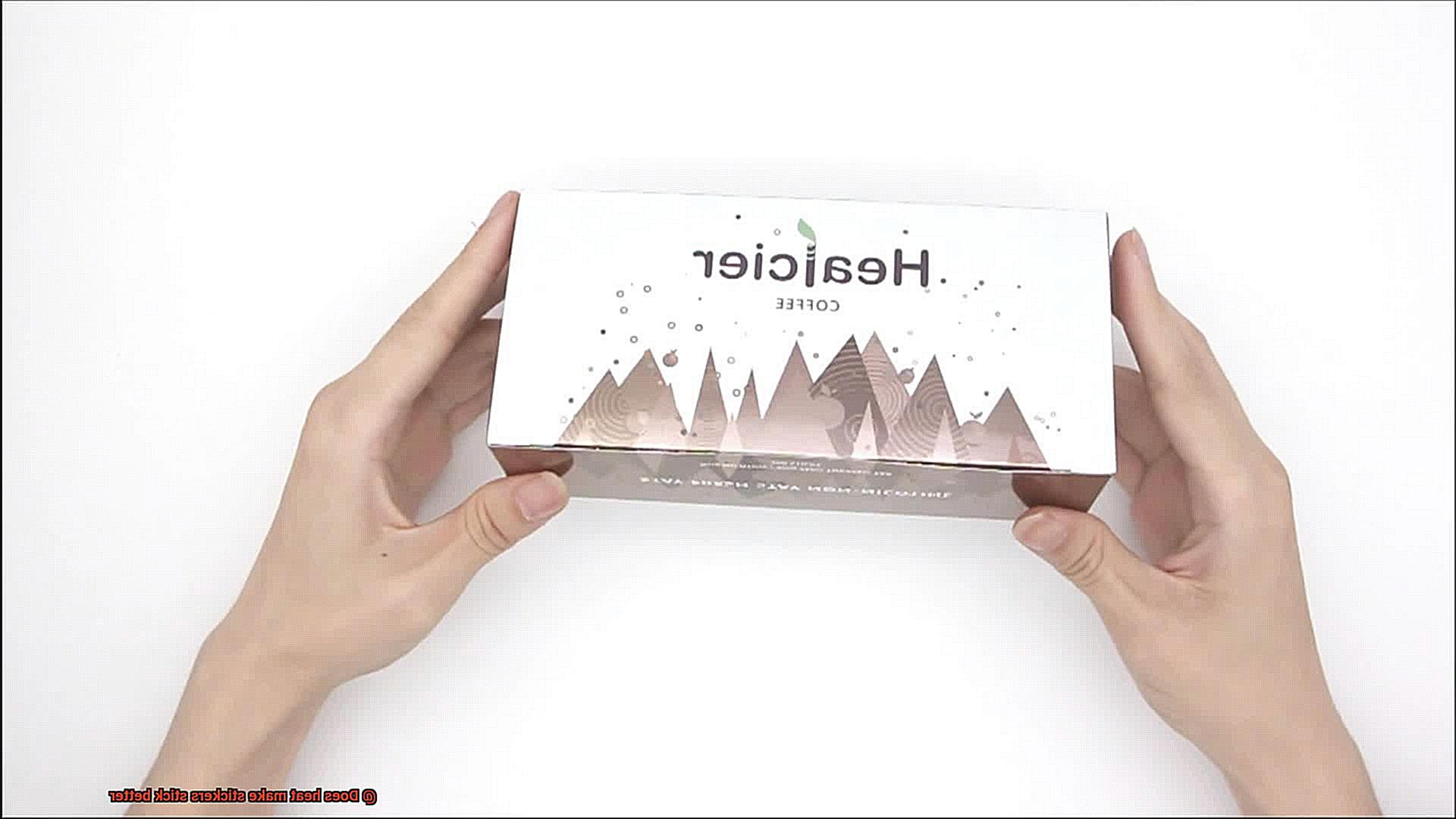
Variations in Reactions:
Heat doesn’t play favorites when it comes to stickers. Some thrive under its influence, while others lose their grip or even suffer damage. By conducting a small-scale test, you can understand how your particular sticker reacts and make an informed decision.
Clean and Dry Surface:
For accurate results, ensure that the surface is squeaky clean and bone-dry before conducting the test. Dirt, dust, or moisture can skew the adhesive properties of the sticker and lead to misleading outcomes.
Considerations and Precautions:
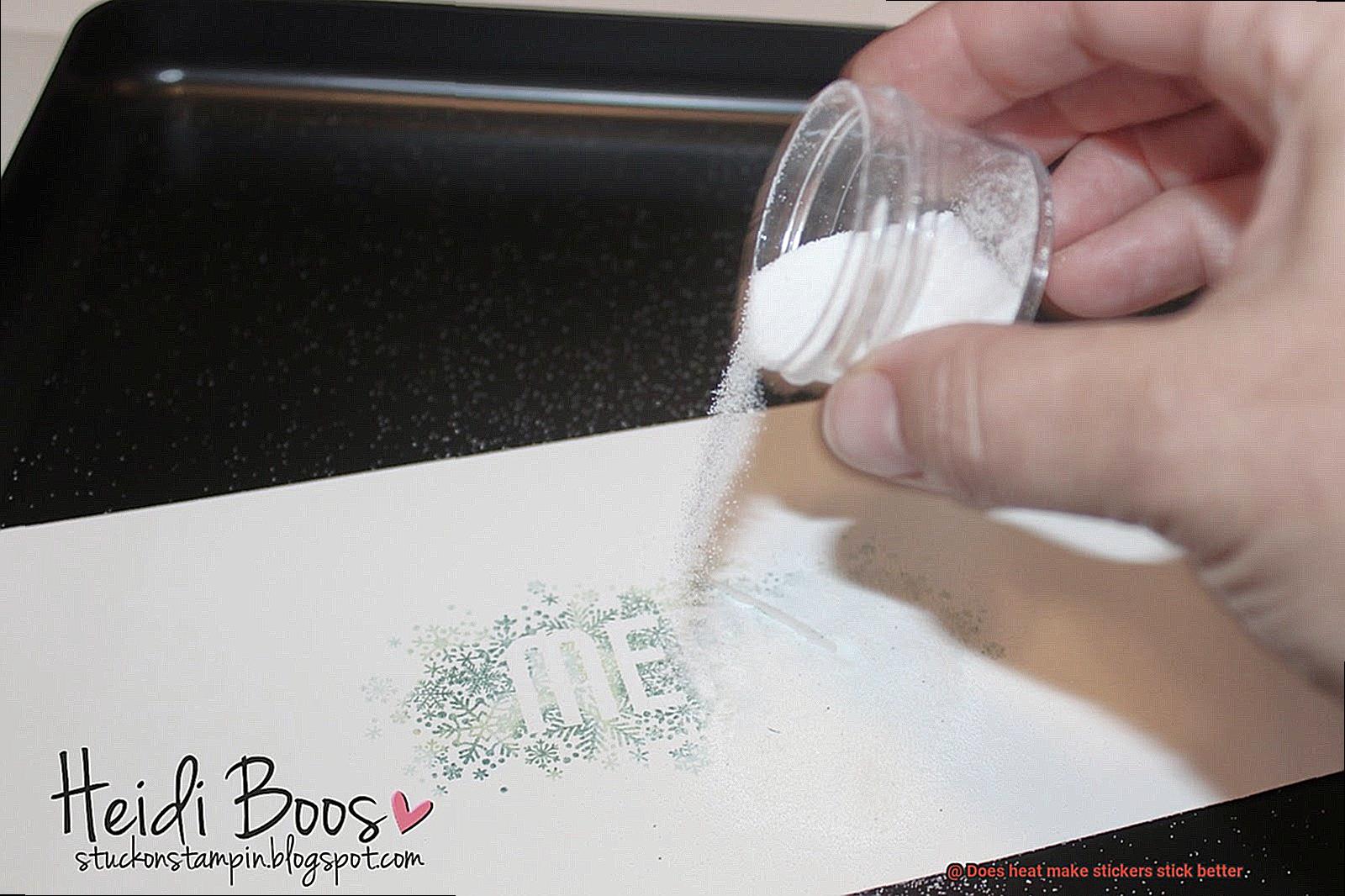
Remember that while heat can enhance stickiness for some stickers, it may not be suitable for all adhesive types or surfaces. Certain materials are sensitive to heat and can incur damage or discoloration when exposed to high temperatures.
Pros and Cons of Using Heat to Improve Sticker Adhesion
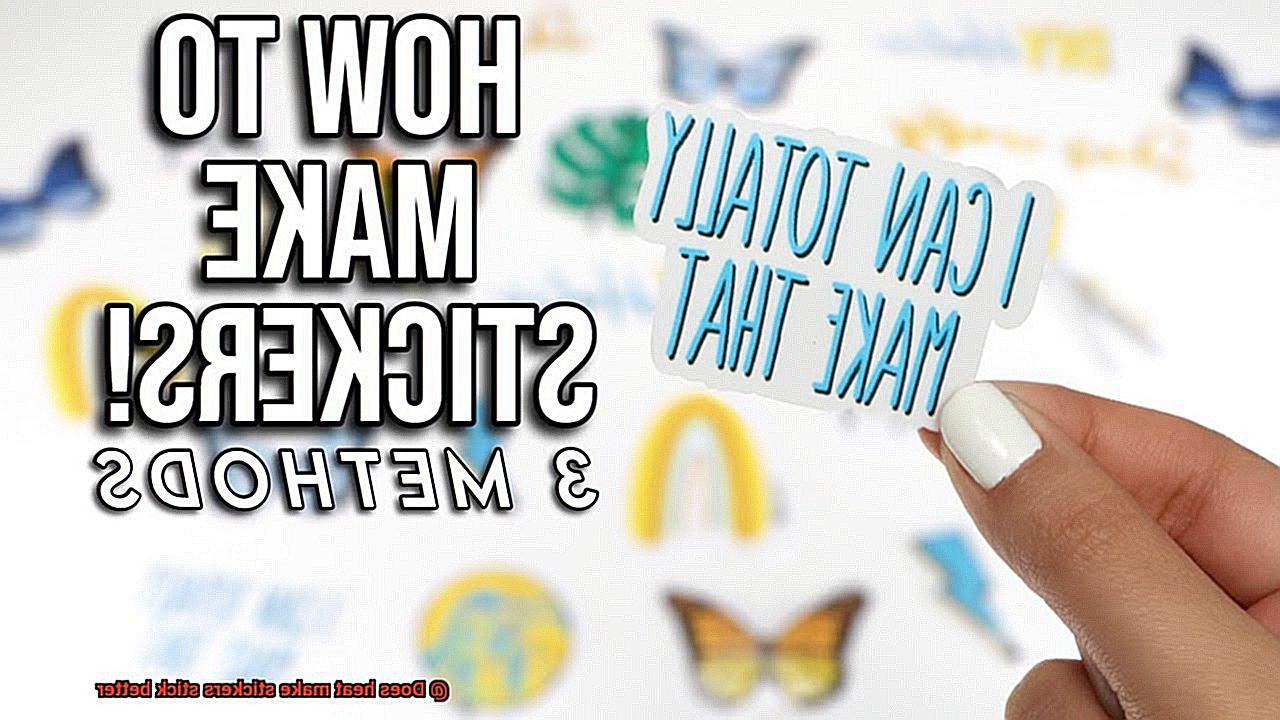
The use of heat to improve sticker adhesion offers several advantages and disadvantages worth considering. Let’s explore the pros and cons in detail.
Pros:
- Increased Bond Strength: Applying heat to stickers enhances their adhesive properties, resulting in a stronger bond between the sticker and the surface it is applied to. The heat makes the adhesive more fluid, allowing it to penetrate and adhere better, ensuring a long-lasting bond.
- Quick and Efficient Application: Heat softens the adhesive, making it easier to apply the sticker smoothly and without wrinkles or bubbles. This method eliminates the need for additional tools or techniques, saving time and effort.
- Versatility: Heat can be used on various surfaces and materials like metal, glass, plastic, and fabric. Whether you’re sticking a decal on your car or labeling items for your business, using heat ensures that you achieve a strong and durable bond regardless of the surface.
Cons:
- Potential Damage to Sensitive Surfaces: While heat improves sticker adhesion, it may not be suitable for all surfaces. Delicate materials such as paper, vinyl, or certain types of paint can be damaged by heat. It is crucial to consider the temperature resistance of the surface before applying heat to avoid any unwanted consequences.
- Limited Reusability: Once a sticker has been heated and applied, it becomes challenging to remove or reposition without causing damage. The heat activates the adhesive properties, making it more difficult to peel off without leaving residue or damaging the underlying surface. If you frequently change stickers, using heat may not be the best option.
- Safety Concerns: Applying heat requires caution to prevent accidents or injuries. High temperatures can cause burns if not handled properly. It is essential to use appropriate safety measures like gloves or heat-resistant tools when working with heat for sticker adhesion.
QlKYDV1Ug88″ >
Conclusion
In conclusion, the answer to the question “Does heat make stickers stick better?”
is a resounding yes. Heat has a remarkable ability to enhance the adhesive properties of stickers, allowing them to adhere more firmly and securely to surfaces.
This increased flexibility ensures that the sticker adheres tightly, resisting peeling or lifting even under challenging conditions.



